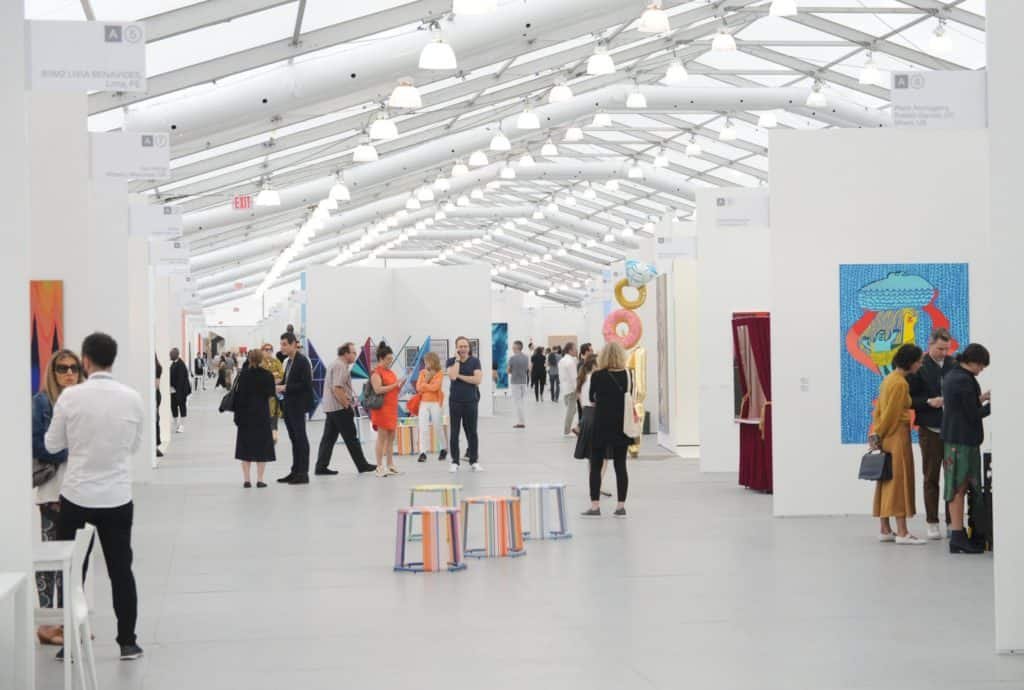The evolution Art fairs have transformed remarkably over the centuries, reflecting the changing dynamics of art, culture, and commerce. From intimate gatherings of local artisans to international hubs of creativity and innovation, these fairs have played a pivotal role in shaping the art world. Understanding their evolution provides insight into how they influence artists, collectors, and the global art market.

Early Beginnings: Local Markets and Artisan Gatherings
In their earliest form, art fairs were small, localized markets where artisans showcased their crafts to the public.
- Medieval Origins: During the Middle Ages, towns in Europe hosted fairs where artists and craftsmen displayed paintings, sculptures, and decorative items.
- Community-Centric Events: These fairs were not just commercial events but also community celebrations that brought people together.
- Bartering Economy: Instead of monetary transactions, many artists exchanged their works for goods or services, emphasizing the practical value of art.
The Renaissance and the Birth of Patronage
The Renaissance ushered in a new era for art fairs, elevating their significance and prestige.
- Wealthy Patrons: As art gained recognition as a symbol of status and intellect, fairs became venues for securing patronage from the elite.
- Artistic Innovation: These gatherings showcased groundbreaking techniques and styles, such as perspective and chiaroscuro, influencing the trajectory of Western art.
- Broader Reach: Renaissance fairs attracted visitors from neighboring regions, laying the groundwork for more expansive art exhibitions.
Industrial Revolution: Art Meets Commerce
The Industrial Revolution marked a significant shift in how art fairs operated, emphasizing commerce and accessibility.
- Mass Production: With advancements in printing and reproduction, fairs began featuring affordable prints alongside original works.
- Urban Expansion: Cities like Paris and London hosted large-scale fairs that catered to a growing urban audience.
- Art and Industry: Expositions, such as the Great Exhibition of 1851 in London, blended fine art with industrial design, showcasing the interplay of creativity and technology.
20th Century: The Rise of the Modern Art Fair
The 20th century saw the emergence of modern art fairs as we know them today, driven by globalization and artistic experimentation.
- First International Art Fairs: Events like the Venice Biennale (founded in 1895) set the stage for international collaboration and competition among artists.
- Commercial Platforms: The launch of Art Basel in 1970 revolutionized the art market by creating a platform for galleries to sell works directly to collectors.
- Cultural Movements: Modern art fairs reflected the zeitgeist of the time, featuring movements like Cubism, Surrealism, and Abstract Expressionism.
Contemporary Art Fairs: Global Hubs of Creativity
Today, art fairs are major cultural events that attract artists, collectors, and enthusiasts from around the world.
- Diversity and Inclusion: Modern fairs emphasize representation, featuring works from emerging and underrepresented artists.
- Digital Integration: Virtual art fairs and online platforms have expanded accessibility, enabling participation from remote locations.
- Cultural Tourism: Art fairs now double as tourist attractions, drawing crowds to cities like Miami, Tokyo, and Hong Kong.
- Sustainability Efforts: Many fairs incorporate eco-friendly practices, reflecting growing awareness of environmental issues.
The Future of Art Fairs
As the art world continues to evolve, so too will art fairs.
- Hybrid Models: A blend of physical and virtual events is likely to dominate the future landscape of art fairs.
- Technological Innovations: Augmented reality and blockchain are expected to redefine how art is displayed, purchased, and authenticated.
- Community Engagement: Art fairs are increasingly focusing on fostering community connections and education, going beyond sales to create lasting cultural impact.
Conclusion
The evolution of art fairs mirrors the progression of art itself—adaptable, innovative, and reflective of societal changes. From humble beginnings to global phenomena, art fairs continue to celebrate creativity while shaping the future of the art market.

